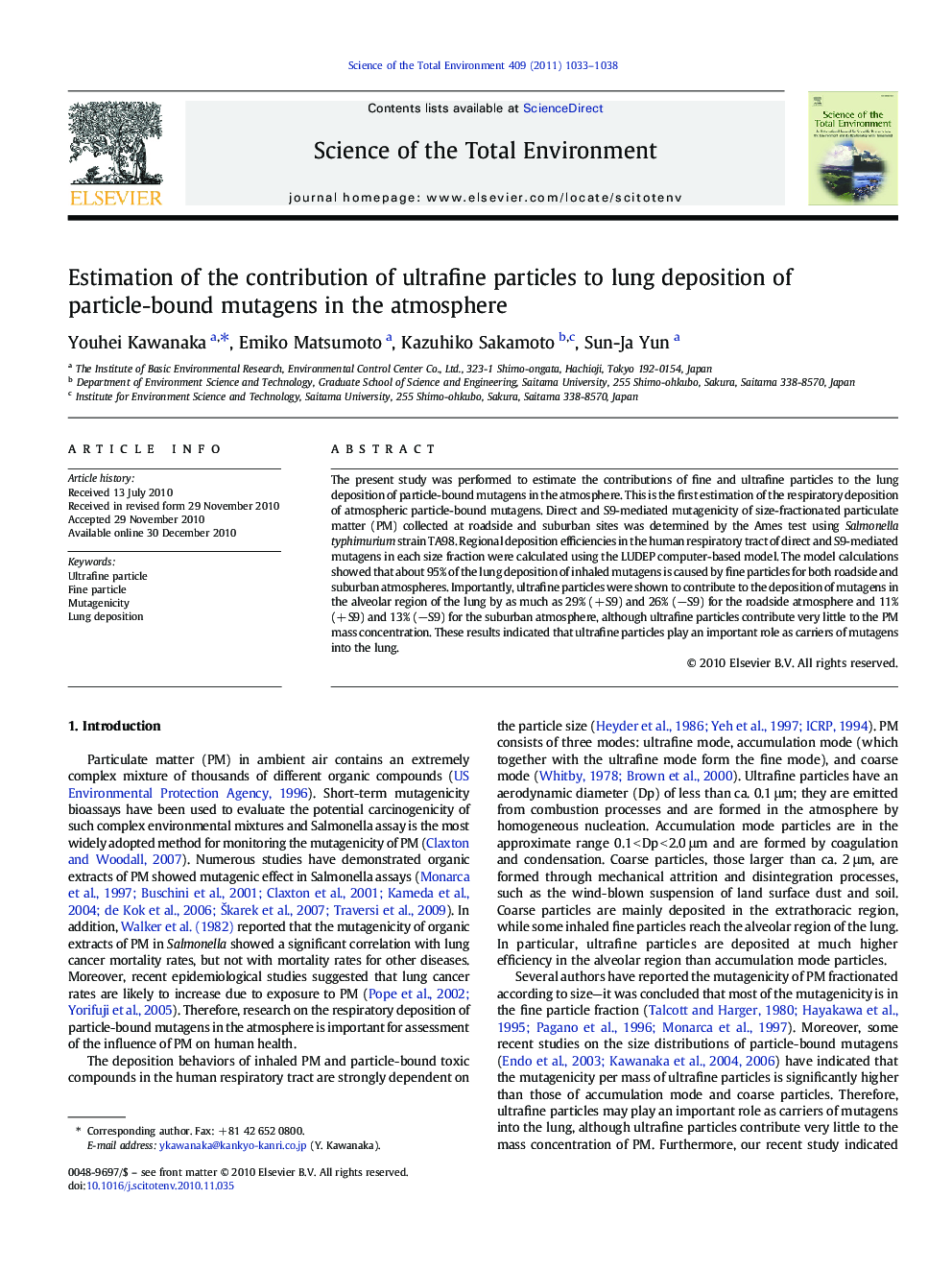| Article ID | Journal | Published Year | Pages | File Type |
|---|---|---|---|---|
| 4430320 | Science of The Total Environment | 2011 | 6 Pages |
The present study was performed to estimate the contributions of fine and ultrafine particles to the lung deposition of particle-bound mutagens in the atmosphere. This is the first estimation of the respiratory deposition of atmospheric particle-bound mutagens. Direct and S9-mediated mutagenicity of size-fractionated particulate matter (PM) collected at roadside and suburban sites was determined by the Ames test using Salmonella typhimurium strain TA98. Regional deposition efficiencies in the human respiratory tract of direct and S9-mediated mutagens in each size fraction were calculated using the LUDEP computer-based model. The model calculations showed that about 95% of the lung deposition of inhaled mutagens is caused by fine particles for both roadside and suburban atmospheres. Importantly, ultrafine particles were shown to contribute to the deposition of mutagens in the alveolar region of the lung by as much as 29% (+ S9) and 26% (−S9) for the roadside atmosphere and 11% (+ S9) and 13% (−S9) for the suburban atmosphere, although ultrafine particles contribute very little to the PM mass concentration. These results indicated that ultrafine particles play an important role as carriers of mutagens into the lung.
Research Highlights► Most of the lung deposition of particle-bound mutagens is due to fine particles. ► Ultrafine particles (UFPs) play an important role as carriers of mutagens in the lung. ► UFPs in the roadside atmosphere are especially important as carriers of mutagens.
